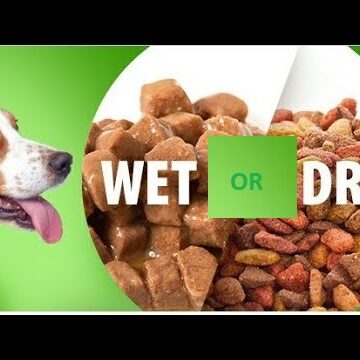Puppies and young dogs have a great appetite for healthy puppy food and want to explore the world. This adventure requires a lot of energy, which you provide with healthy puppy food. Make sure you follow the breeder’s or vet’s feeding guidelines so that the animal’s bones develop healthily.
Growing up a puppy – when nature works a miracle

Puppies are growing at a utopia speed. After birth, they are helpless balls of fur that can only lie around and make noises. The eyes are still closed and the paws can at best be thrown around in the air in an uncoordinated manner. Within the first week of life, the weight of the four-legged friend doubles. Sleeping, drinking, and growing are the only things in the puppy’s life during this time.
After three weeks, the puppy is already able to carry its body weight on its legs through the nursery. The siblings fight with each other and are increasingly interested in the mother’s food. After five to six weeks, the deciduous teeth have come through.
Puppies are fascinated by food because nature is designed for growth. Within a few weeks, a helpless creature becomes an active young dog that is gaining in size and weight every day. After eight weeks, puppies are weaned from their mother’s milk and fed special puppy food. After ten weeks, the four-legged friend can be separated from the mother and move into a new home.
Food means energy that wants to be used up
Your puppy’s diet is very important. Even if the new family member tempts you with begging eyes to fill the feeding bowl again and again – feeding times and amounts of food must be observed. If your four-legged friend gets food when he asks for it, he will grow faster than nature intended.
Every feed intake supplies energy that has to be used up. In the first weeks of life, this is used for the growth of the body and the development of all senses. A surplus would ensure that the animal grows faster than planned.
What’s wrong with rapid growth?
Bone growth takes time. In humans, it takes almost a year for a baby to be carried by its skeleton and able to stand up.
Small dogs go through this process in three to four weeks, but even they are only fully grown at the age of several months or, in the case of larger breeds, from a year. During this time, bones must form and lengthen, which requires an adequate supply of minerals. If growth occurs too quickly in this phase, not enough minerals are stored in the bone cells. There is damage to the skeleton that can no longer be repaired.
What food does a puppy need?
Food for puppies needs a different composition than for adult dogs. The energy requirements of puppies and young dogs are on a completely different levels. They need the energy to play and socialize while growing every day and need the strength to do so.
That’s why you should only use puppy food when it comes to feeding your four-legged friend. Protein, carbohydrates, and fats are balanced with vitamins and minerals in a way that meets the growing dog’s energy needs. Food for adult animals cannot meet the needs of a young animal, so you should only use food for puppies or young dogs.
- Puppy food is tailored to the puppy’s sensitive stomach and intestinal system.
- Puppies need a different composition of their feed because their energy requirements are different.
- Until the milk teeth have grown, the feed must be given as a porridge.
- In the first few months of life, the daily puppy food must be fed in four to six portions.
Growth curves as a guide for the right amount of feed
If you got your puppy from a breeder, they can give you a growth curve of your animal. For animals from the animal shelter, veterinarians can help with a growth chart. It shows you how the size and weight of your animal should develop based on its breed and age.
These guidelines will help you not to put too much food in your puppy’s bowl. Especially after growth spurts, you will be tempted to feed more than necessary. Dogs look particularly lanky at this stage and you will be tempted to give larger portions of food. However, bone growth and adequate mineral storage must be in balance for your puppy to develop a healthy skeleton.
Read Also: CBD oil for dogs
The dependence of development on size and breed
The amount of food puppies need depends primarily on the breed and the weight that the animals will reach after they have grown. As a result, smaller dogs need less food than larger breeds. In addition, there are criteria such as the activity level of your animal and the size development in relation to age. For example, if your dog was born as the last sibling in the litter, it can be particularly tender and sensitive. Then he may always stay a little under the growth curve because his development will take a little more time.
Each animal develops its own character. Therefore, in the same litter, there are puppies that are lethargic and do not like to move. Other animals are constantly fighting, romping, and playing. Particularly active puppies and young dogs use up more energy than calmer animals. You should always take this fact into account and adapt the puppy’s food to the respective development phase. The following list shows how different the puppy food requirements are for different breeds.
Up to 5 kilograms final weight:
In the first three months, the animal receives 200 to 400 grams of puppy food. Then up to 400 grams are fed daily.
5 to 15 kilograms final weight:
In the first three months, the animals receive 400 to 800 grams of puppy food. From the third month, the daily requirement increases to 1000 grams. From the seventh month, the puppy food can be reduced to a maximum of 800 grams.
Fixed feeding times

Get your dog used to fixed feeding times. This is not only beneficial for the animal’s digestion. This gives your four-legged friend a fixed daily rhythm that offers him security. In addition, the animal’s reflexes are conditioned in this way. The puppy will instinctively know when it is time for the next feeding. Salivation and the production of gastric juice will then start automatically even before the animal has seen or smelled its puppy food.
In the beginning, your puppy gets several meals, so there will be no fixed rhythm at this point. If your four-legged friend only gets two or three portions, you can introduce regular feeding times. Since your puppy is already eating large amounts of puppy food at this point, you don’t need to feel guilty if you only have two to three meals a day.
Dry or wet food?

Feed your puppy mostly wet food. This comes closest to the texture of the first mash and makes for an easier transition in the diet. In addition, the feeling of satiety sets in faster with wet food, which makes the puppy happy. Dry food, on the other hand, is a very concentrated food, which is why you should use it sparingly, especially in the first year of life. Give the puppy dry food as a reward so that it can get used to this form of feeding and train its teeth.
Puppy food: FAQ
How long has breast milk been around?
In the first few weeks of life, puppies get all the nutrients they need for a good start in life through their mother’s milk. After three to four weeks, the energy requirement increases and you can start feeding porridge. The exact time varies and depends on the breed and the number of puppies.
When is there solid food?
Until the milk teeth have come through (3rd to 4th week of life), there is mother’s milk for the puppies. From the third week of life, puppies are able to walk on their paws. At this point, their need for energy and interest in a food bowl is growing. To ease the transition from breast milk to solid food, the first wet food can be diluted with warm water.
How much feed is necessary?
The amount of food for puppies differs based on breed, final weight, activity level, and stage of development. For every breed of dog, there are so-called development curves that show the approximate feeding requirements. However, keep in mind that animals do not develop according to textbooks either, and adjust the amount of puppy food individually.
Fixed feeding times or feeding as needed?
As soon as your puppy only eats two to three meals a day, you should introduce fixed feeding times. They give the four-legged friend the feeling of structure and security. At the same time, they condition your dog and ensure healthy digestion.




